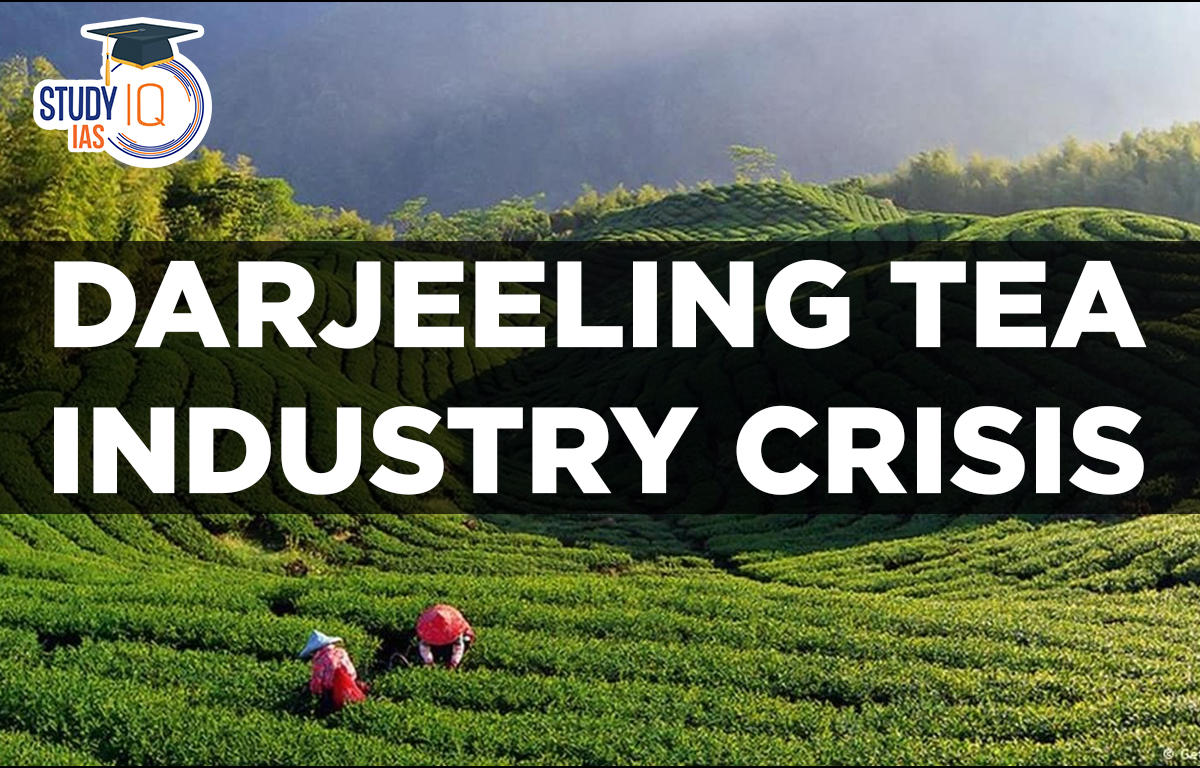Table of Contents
Darjeeling Tea
Darjeeling Tea is also known as the ‘Champagne of Teas’. It is produced in the Darjeeling Hills, located in the state of West Bengal. It was the first product of India to get the GI (Geographical Identification) tag in 2004 for its distinctive aroma and flavour. There are about 87 gardens in Darjeeling which employ about 55,000 workers. Together, these gardens produce 7 million kg of tea, majority of which is exported.
Issues Faced by Darjeeling Tea Industry
- Import of sub-standard Nepal tea: A report of Parliamentary standing committee has cited import of of substandard tea from neighbouring countries, especially Nepal for jeopardizing the tea industry of India.
- Traders have misused the Revised Treaty of Trade between the Governments of India and Nepal to import sub-standard tea and then sold and re-exported it as premium Darjeeling Tea.
- Nepal produces tea at a lower price because of less input costs and fewer quality checks. Despite low quality, it poses a serious challenge for Darjeeling Tea.
- Regional instability: Agitation held for separate State of Gorkhaland caused shutdown in the Darjeeling hills, bringing tea production to a halt.
- Since majority of Darjeeling Tea is exported, exporters moved on to cheaper varieties of tea, including the imported variety from Nepal.
- Reduction in Tea Produced: The tea production in Darjeeling used to be around 10-12 million kg a decade ago, but it now stands at 6.87 million kg (2021).
- Industry experts say the decline in production is due to multiple factors, which include climate change and declining soil yields.
- Declining land availability: There is no land left for expansion of tea gardens in Darjeeling. The tea bushes are old and their yield is also low.
- Uprooting and planting new tea bushes in the existing land is both costly as well as time-consuming.
- High input cost: The prices of Darjeeling Tea have grown at a CAGR (cumulative annual growth rate) of only 1.7% in the last six years against an increasing cost of input between 10% and 12% CAGR.
- Declining demand from European markets: The demand for Darjeeling Tea has fallen drastically, especially from European market in the wake of the Russia-Ukraine war.
Way Forward
- Restricting Tea imports from Nepal: The Government needs to restrict the influx of tea from Nepal. The Indo-Nepal Treaty has to be reviewed for incorporating stringent requirements for certificate of origin on tea imports from Nepal.
- GI tag for Small Tea Growers (STGs): Currently, GI tag is provided to the 87 tea estates which produce Darjeeling Tea. There is a need to recognize Small Tea Growers (STGs) as GI-registered producers to ensure better price premium.
- Domestic consumption: Since exports are not picking up, industry experts have called for raising domestic tea consumption.
- The per capita tea consumption in India remains at 850 grams, which is less than neighbouring countries.

Tea Industry in India
- India is the world’s second-largest tea producer after China. Majority of tea is consumed domestically. Major export destinations are Russia, Iran, the UAE, the US, the UK, Germany and China.
- Growing Conditions:
- Temperature: Tea requires moderately humid conditions. The optimum temperature must be 20 to 33 degree C.
- Rainfall: Rainfall between 150 cm to 300 cm should be well distributed throughout the year.
- Soil: The crop grows well in deep, well-drained, loamy forest soils that are rich in humus and iron.
- Conditions: Tea grows well under shade. Water-logging can damage the crops and hence must be grown on hill slopes.
- Tea-producing states in India:
- Assam, West Bengal, Kerala, Tamil Nadu, Karnataka, Himachal Pradesh, Uttarakhand, Tripura, Odisha, Bihar, Sikkim, Arunachal Pradesh, Mizoram, Manipur, Meghalaya, Nagaland.

























 WhatsApp
WhatsApp